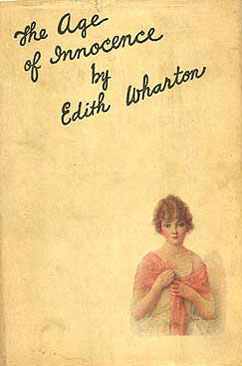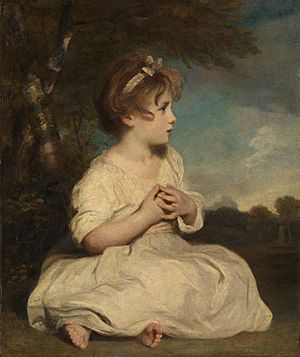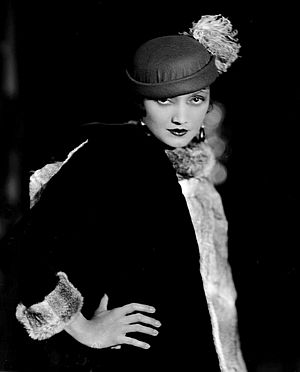The Age of Innocence facts for kids

1920 first edition dust jacket
|
|
| Author | Edith Wharton |
|---|---|
| Country | United States |
| Language | English |
| Publisher | D. Appleton & Company |
|
Publication date
|
1920 |
| Awards | 1921 Pulitzer Prize for Fiction |
The Age of Innocence is a novel written in 1920 by American author Edith Wharton. It was her twelfth novel. The story first appeared in parts in Pictorial Review magazine during 1920. Later that year, it was released as a full book. It won the 1921 Pulitzer Prize for Fiction in 1921. This made Edith Wharton the first woman to win this important award for fiction. The story takes place in the 1870s in New York City, focusing on the wealthy "Gilded Age" society. Wharton wrote the book when she was in her 50s and already a well-known writer.

Contents
Story Background
The Age of Innocence is a softer story compared to Wharton's earlier novel, The House of Mirth. This book was set in the time of Wharton's own childhood. In her autobiography, Wharton explained that writing The Age of Innocence helped her escape by looking back at her childhood memories of an "America" that had changed a lot. She felt that the world she grew up in had been destroyed by World War I in 1914. Many people who study the book agree that it explores the challenge of mixing old traditions with new ideas.
Wharton grew up in the strict, proper society of old New York, which is shown in the story. She spent many years in Europe, including during World War I. The war brought huge changes and destruction. Experts say that The Age of Innocence was written after the war. It reflects the loss of the old world and the values Wharton cared about.
The novel is about a wealthy couple getting ready to marry. But then the bride's cousin, Ellen Olenska, arrives. She has a troubled past, and her presence causes problems for the couple's happiness. The book questions the rules and ideas of New York society in the 1870s. However, it doesn't completely criticize the way things were. The novel is known for its detailed and accurate picture of how the wealthy American upper class lived in the 19th century. It also tells a sad story about society's impact on people. Wharton was 58 when the book came out. She had lived in that world and saw it change greatly after World War I.
The title, The Age of Innocence, is a bit ironic. It points out the polite manners of New York society, which often hid complicated secrets. The title is believed to come from a famous painting by Sir Joshua Reynolds called A Little Girl, which later became known as The Age of Innocence. This painting was widely used to show childhood in the late 1700s.
What Happens in the Story
Newland Archer is a young, successful lawyer from one of New York City's most famous families. He is excited about marrying May Welland, who is beautiful and protected. But he starts to have doubts when May's cousin, Countess Ellen Olenska, appears. Ellen is worldly and different from the innocent May. Ellen has returned to New York from Europe after leaving a difficult marriage to a Polish count.
At first, Ellen's arrival worries Newland because it might harm his future wife's family reputation. But he becomes interested in Ellen, who openly ignores New York society's strict rules. As Newland admires Ellen more, he doubts his choice to marry May. Marrying May, who is a perfect example of old New York society, no longer seems like his ideal future.
Ellen decides to divorce Count Olenski. This causes a big problem for her family, who are scared of scandal. Living apart is okay, but divorce is not. To save the Welland family's reputation, Newland's law partner asks him to convince Ellen not to get divorced. He succeeds, but during this time, he starts to care deeply for her. Afraid of falling in love with Ellen, Newland asks May to marry him sooner, but she says no.
Weeks later, Newland tells Ellen he loves her. Ellen feels the same way but is worried their love will hurt May. She doesn't want Newland to leave May for her. Soon after, Newland gets a message from May agreeing to marry sooner.
Newland and May get married. He tries to forget Ellen but can't. His marriage feels ordinary, and the social life he once enjoyed now seems empty. Even though Ellen lives far away in Washington, he still loves her. Their paths cross when he and May are in Newport, Rhode Island. Newland learns that Count Olenski wants Ellen to return to him. She has refused, even though her family wants her to go back to Europe. Because she is independent, her family has stopped giving her money, just as the count had.
Newland desperately wants to leave May and be with Ellen. He is obsessed with how they can finally be together. He asks her to run away with him, but she refuses. Then Ellen is called back to New York City to care for her sick grandmother. Her grandmother accepts Ellen's decision to stay separated from her husband and agrees to give her money again.
Back in New York, Newland pressures Ellen again, and she agrees to meet him secretly. But soon after their talk, Newland finds out that Ellen has decided to return to Europe instead. When May announces a farewell party for Ellen, Newland decides he will leave May and follow Ellen to Europe. That night, after the party, Newland plans to tell May he is leaving her for Ellen. But May stops him. She tells him she found out that morning that she is pregnant. She also reveals that she told Ellen about her pregnancy two weeks earlier, even though she wasn't sure then. This suggests that May did this because she suspected Newland's feelings for Ellen. Feeling trapped, Newland decides to stay with May and not follow Ellen. He gives up his love for Ellen for the sake of his child.
Twenty-six years later, after May has passed away, Newland and his oldest son are in Paris. His son learns that his mother's cousin, Ellen, lives there. He arranges to visit Ellen at her apartment. Newland is shocked at the thought of seeing Ellen again. When they arrive outside her building, Newland sends his son up alone to meet Ellen. He waits outside, watching her balcony. Newland thinks about going up but decides not to. He walks back to his hotel without seeing her. Newland's final thoughts about their love are, "It's more real to me here than if I went up."
Main Characters
Newland Archer
Newland is the main character. He is a young, popular, and successful lawyer. He lives with his mother and sister in a fancy New York City home. From childhood, his life has been shaped by the rules of wealthy New York society. His engagement to May Welland is another success. At first, he is happy and dreams of a traditional marriage where he teaches and his wife learns. His life changes when he meets Countess Ellen Olenska. Through his friendship and then love for her, he starts to question the values he grew up with. He sees how unfair society is to women and how shallow its customs are. He struggles to balance his promise to May with his love for Ellen. He can't find a place for their love in the complicated, judgmental world of New York society. In the end, Newland realizes that the only place for their love is in his memories.
May Welland
May is Newland Archer's fiancée and later his wife. She was raised to be a perfect wife and mother. She follows all of society's rules perfectly. For the most part, she seems like the shallow, uninteresting young woman that New York society expects. However, at one point, May shows Newland a rare glimpse of maturity and kindness. She offers to let him out of their engagement if he loves someone else. When he tells her he only loves her, May seems to trust him. But after they marry, she suspects Newland loves Ellen. Still, May pretends to be happy in front of society, keeping up the idea that they have the perfect marriage. Her unhappiness makes her act in a way that Newland doesn't see until it's too late. To make Ellen leave, May tells Ellen she is pregnant before she is even sure. Even so, May still has kindness. After May's death, Newland learns that she always knew about his love for Ellen. As May was dying, she told their son that their children could always trust Newland because he gave up what was most important to him out of loyalty to their marriage. May represents the idea of "innocence" in the story.
Ellen Olenska
Ellen is May's cousin and Mrs. Manson Mingott's granddaughter. She became a countess by marrying a Polish nobleman, Count Olenski. Her husband treated her badly and took her money. When the story begins, Ellen has left her unhappy marriage and returned to her family in New York City. She is a free spirit who helps Newland Archer see beyond the narrow views of New York society. She treats her maid as an equal. She goes to parties with people society looks down on, and she invites Newland, her cousin May's fiancé, to visit her. Ellen suffers as much as Newland from their impossible love. She is willing to live with the uncertainty as long as they can love each other from a distance. Ellen's love for Newland guides her important choices: she stops her divorce from Count Olenski, stays in America, and eventually leaves Newland's life. Her conscience and duty to her family make her love for Newland complicated. When she learns of May's pregnancy, Ellen immediately decides to leave America. She refuses Newland's attempt to follow her to Europe, allowing her cousin May to start her family with Newland.
Mrs. Manson Mingott
Mrs. Mingott is the powerful head of the Mingott family and grandmother to Ellen and May. She was born into a less important family. She became a widow at 28. She made sure her family had a high social standing through her cleverness and strong personality. She controls her family. For example, at Newland's request, she gets May and Mrs. Welland to agree to an earlier wedding date. She also controls the family's money. Mrs. Mingott is a bit of a rebel in polite New York society. Sometimes she pushes the limits of acceptable behavior. For example, she receives guests on the ground floor of her house, which society usually linked to women with bad reputations. She welcomes Ellen, which others view with suspicion. She insists the rest of the family support Ellen. Mrs. Mingott was inspired by Edith Wharton's own great-great-aunt, Mary Mason Jones.
Mrs. Augusta Welland
Mrs. Welland is May's mother. She raised her daughter to be a proper society lady. May's quietness, lack of imagination, and strict ideas of what is right and wrong come from her mother's influence. Mrs. Welland has also made her husband, the weak-willed Mr. Welland, follow her wishes. Mrs. Welland is the reason May insists on a long engagement. Without her mother, May might have agreed sooner to Newland's request for an earlier wedding. After a few years of marriage, Newland Archer sees his mother-in-law's traits in May: she becomes steady, unimaginative, and dull. Later, he feels May shaping him in the same way she shaped Mr. Welland.
Other Characters
- Christine Nilsson: A famous singer who performs in the opera Faust on the night of Archer and May's engagement.
- Mrs. Lovell Mingott: May and Ellen's aunt.
- Lawrence Lefferts: A rich young man in Archer's social group. He is seen as the expert on manners. Archer thinks Lefferts is behind New York society's rude refusal to attend Ellen's welcome dinner.
- Sillerton Jackson: The expert on New York society families. He knows everyone's family history. Mrs. Archer and Janey invite him for dinner to hear gossip.
- Julius Beaufort: An arrogant British banker who tries to get Ellen's attention. His banking business later fails, and he leaves New York society in disgrace. This downfall might be based on the Panic of 1873.
- Regina Beaufort: Julius Beaufort's wife and Mrs. Manson Mingott's niece. She asks Mrs. Mingott for money when her husband's bank fails. Her visit causes Mrs. Mingott to have a stroke.
- Janey Archer: Archer's quiet, unmarried sister. She and her mother love to gossip about society. Janey doesn't approve of Ellen because she is different and independent.
- Mrs. Adeline Archer: Archer's widowed mother. She believes strongly in New York society's values. Like Janey, she sees Ellen with suspicion.
- Mrs. Lemuel Struthers: A woman on the edge of New York society. People don't trust her until Ellen becomes her friend. She eventually becomes popular.
- Count Olenski: Ellen's husband, a European nobleman who treated Ellen badly. He never appears in the story.
- Sophy Jackson: Sillerton Jackson's unmarried sister. She is a friend of Janey and Mrs. Archer.
- Louisa and Henry van der Luyden: Cousins of the Archers and the most powerful people in New York society. They help Ellen by inviting her to an exclusive party to show society they support her.
- Duke of St Austrey: An English Duke and a cousin of the Van der Luydens.
- Nastasia: Ellen's Italian maid.
- Mr. Letterblair: The main partner at Archer's law firm. He asks Archer to convince Ellen not to divorce.
- Mrs. Rushworth: A married woman Archer had a relationship with before he was engaged to May.
- Ned Winsett: A journalist and friend of Archer. He challenges Archer to think about things outside of society.
- Marchioness Medora Manson: The aunt who took Ellen to Europe as a child. She tries to persuade Archer to convince Ellen to return to the Count.
- Dallas Archer: May and Archer's oldest child. He takes his father on a trip to Europe. Through Dallas, Archer learns that May understood his sadness after Ellen left.
- Fanny Beaufort: Dallas Archer's fiancée and the daughter of Julius Beaufort. She asks Dallas to visit Ellen when he and Archer are in Paris.
Main Ideas
One of the most important ideas in the book is about wealth and social class. Characters are proud of their social standing. Those from "old money" feel worried by people who are gaining "new money." The characters' lives revolve around keeping up with the latest fashion, parties, and appearances. Being accepted by this high society is the most important thing to them.
Another clear idea in the novel is love. This includes the love between Newland Archer and May Welland, and the strong love between Newland Archer and Ellen Olenska. Newland Archer's strong interest in May Welland's innocence is clear at the beginning of the book. The idea of innocence changes throughout the story. For example, May says she is pregnant to make sure Ellen stays away from Newland.
How People See the Story Now
Helen Killoran explains that critics have always admired Edith Wharton's writing skill. They liked her attention to how the story was built and her clever use of irony. They also liked her descriptions of homes and interiors. Over the years since the book was published, critics have focused more on how the book shows money and class differences.
Ellen Olenska and May Welland have always been central to discussions about the book. May Welland was first seen as doing the right thing by talking about her pregnancy to save her marriage. But now, she can also be seen as clever and tricky, rather than just desperate. Ellen Olenska's character also brings up ideas about women's roles in society, which is a common topic in modern literary studies.
Instead of focusing on Newland Archer's easy, wealthy life, some modern readers connect with his sad outlook on things.
In a big study of the novel in 2005, Alisa Mariva DeBorde noted that Wharton often used opposites in her own life. She was both a socialite and an author, a woman of old New York and a European rebel. She kept different parts of her life separate. Similarly, in The Age of Innocence, Ellen and May are complete opposites. They represent different ways of life in the 1870s and cannot happily exist together. Wharton shows this contrast by describing their inner thoughts, often using ideas of water and fire, which destroy each other when combined.
Hillary Kelly suggests that Wharton's own high social status made her story feel very real. She says that Wharton used this idea of showing secrets as a powerful tool in The Age of Innocence.
Movies, TV, and Stage Shows

- In 1924, a silent movie version was released by Warner Brothers. It starred Beverly Bayne as Countess Olenska.
- In 1928, Margaret Ayer Barnes turned the novel into a play. It was first shown on Broadway, starring Katharine Cornell as Countess Olenska.
- In 1934, a movie version was directed for RKO Studios. It starred Irene Dunne as Countess Olenska.
- In 1993, Martin Scorsese directed a film version. It starred Michelle Pfeiffer as Countess Olenska, Daniel Day-Lewis as Archer, and Winona Ryder as May Welland Archer. Ryder was nominated for an Academy Award for her role.
- In 2009, an episode of the TV show Gossip Girl was called "The Age of Dissonance." In it, characters put on a play version of The Age of Innocence, and their own lives started to copy the play.
- In 2018, a new stage play was produced.
See also
 In Spanish: La edad de la inocencia (novela) para niños
In Spanish: La edad de la inocencia (novela) para niños

